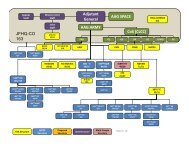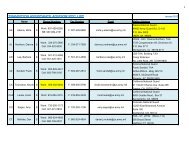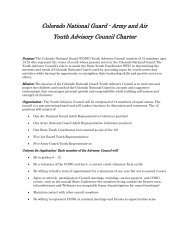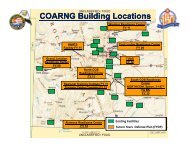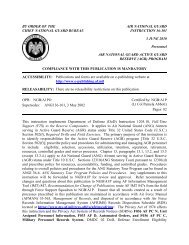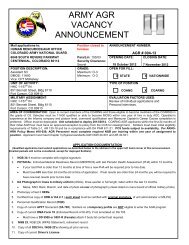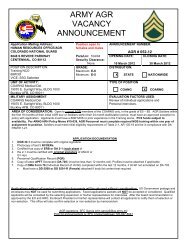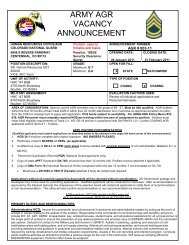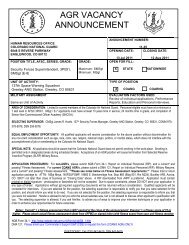Prosecuting Alcohol-Facilitated Sexual Assault - National District ...
Prosecuting Alcohol-Facilitated Sexual Assault - National District ...
Prosecuting Alcohol-Facilitated Sexual Assault - National District ...
You also want an ePaper? Increase the reach of your titles
YUMPU automatically turns print PDFs into web optimized ePapers that Google loves.
E NDNOTES<br />
71 “Exit strategy” refers to the defendant’s plan for getting away with the crime. It includes steps<br />
he took to keep the victim quiet and to destroy evidence, as well as anything else done to preclude<br />
getting caught.<br />
72 The prosecutor could then argue that this was the perfect crime because the victim was unable<br />
to resist and unlikely to remember.<br />
73 See, e.g., FED. R. EVID., Rule 412 (Sex Offense Cases; Relevance of Alleged Victim’s Past<br />
<strong>Sexual</strong> Behavior or Alleged <strong>Sexual</strong> Predisposition).<br />
(a) Evidence generally inadmissible. The following evidence is not admissible in any civil or<br />
criminal proceeding involving alleged sexual misconduct except as provided in subdivisions (b)<br />
and (c):<br />
(1) Evidence offered to prove that any alleged victim engaged in other sexual behavior.<br />
(2) Evidence offered to prove any alleged victim’s sexual predisposition.<br />
(b) Exceptions.<br />
(1) In a criminal case, the following evidence is admissible, if otherwise admissible under these<br />
rules:<br />
(A) evidence of specific instances of sexual behavior by the alleged victim offered to prove that<br />
a person other than the accused was the source of semen, injury or other physical evidence;<br />
(B) evidence of specific instances of sexual behavior by the alleged victim with respect to the<br />
person accused of the sexual misconduct offered by the accused to prove consent or by the prosecution;<br />
and<br />
(C) evidence the exclusion of which would violate the constitutional rights of the defendant.<br />
(2) In a civil case, evidence offered to prove the sexual behavior or sexual predisposition of any<br />
alleged victim is admissible if it is otherwise admissible under these rules and its probative value<br />
substantially outweighs the danger of harm to any victim and of unfair prejudice to any party.<br />
Evidence of an alleged victim’s reputation is admissible only if it has been placed in controversy<br />
by the alleged victim.<br />
(c) Procedure to determine admissibility.<br />
(1) A party intending to offer evidence under subdivision (b) must—<br />
(A) file a written motion at least 14 days before trial specifically describing the evidence and<br />
stating the purpose for which it is offered unless the court, for good cause requires a different<br />
time for filing or permits filing during trial; and<br />
(B) serve the motion on all parties and notify the alleged victim or, when appropriate, the alleged<br />
victim’s guardian or representative.<br />
(2) Before admitting evidence under this rule the court must conduct a hearing in camera and<br />
afford the victim and parties a right to attend and be heard. The motion, related papers, and the<br />
record of the hearing must be sealed and remain under seal unless the court orders otherwise.<br />
74 A sample motion can be obtained from NCPVAW’s Prosecution Toolkit at<br />
http://www.ndaa.org/phpdocs/prosecution_toolkit.html.<br />
75 MCCORMICK, supra note 29 at 80.<br />
76 “Evidence of other crimes, wrongs, or acts is not admissible to prove the character of a person<br />
in order to show action in conformity therewith. It may, however, be admissible for other purposes,<br />
such as proof of motive, opportunity, intent, preparation, plan, knowledge, identity, or<br />
absence of mistake or accident, provided that upon request by the accused, the prosecution in a<br />
criminal case shall provide reasonable notice in advance of trial, or during trial if the court<br />
excuses pretrial notice on good cause shown, of the general nature of the evidence it intends to<br />
introduce at trial.” FED. R. EVID. 404(b).<br />
77 A SART should include prosecutors, police officers, victim advocates, and <strong>Sexual</strong> <strong>Assault</strong><br />
Nurse/Forensic Examiners, among others. These allied professionals must be involved from the<br />
NDAA<br />
47




